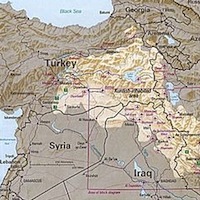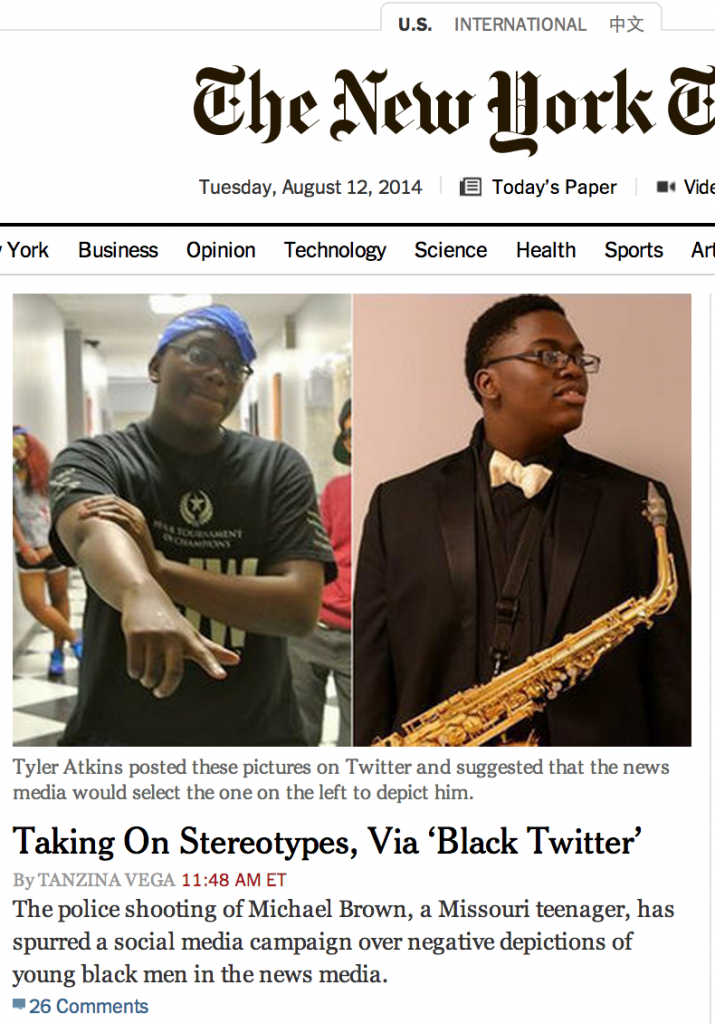“Now why they’re doing this, I don’t know. Because there is no threat going on, none, that merits this. There is none. Ok? […] There is nothing going on, on this street, right now, that merits this scene, out of Bagram. Nothing. So if people wonder why the people of Ferguson, Missouri are so upset, this is part of the reason. What is this?? This doesn’t make any sense.” — Jake Tapper, CNN, live on the scene. Watch below:
AFD Radio Exclusive: Firsthand reports from Ferguson

Eyewitness accounts from Ferguson MO by longtime area residents and from the National Moment of Silence 2014 rally in Chicago.
Ferguson/NMOS14 Discussion:
AFD 96 – Ferguson / NMOS14
Recorded late afternoon of Sunday August 17th, 2014
Segment 1 Panel:
– JP from St. Louis County: Lives near Ferguson, 10-year U.S. military veteran, 20 year county resident
– Ama from St. Louis County: Lives next to Ferguson, wife owns a business there, 12 year county resident, participant in Ferguson rallies
– Michael from South Carolina: Returning guest, host of “Pound4Pound Boxing Report” show
Segment 2 Guest:
– JP from Chicago: Co-host of the “Nerdgasm Noire” show, lifelong Chicago resident, participant in the NMOS14 rally in Chicago
What we talked about this hour:
– Longstanding tensions with police in Ferguson and the wider St. Louis County
– The geography of the Ferguson protests and manifestations of outrage
– Militarization of American police forces
– Respectability politics: Why dressing and speaking a certain way won’t save Black Americans
– National Moment of Silence events
– Personal stories of being harassed by police in the St. Louis area, including Ferguson
– Raising children under / growing up with an abusive police force
– Organizing for future change, from social media to events on the ground
Subscribe
RSS Feed: Arsenal for Democracy Feedburner
iTunes Store Link: “Arsenal for Democracy by Bill Humphrey”
And don’t forget to check out The Digitized Ramblings of an 8-Bit Animal, the video blog of our announcer, Justin.
Podcast: Play in new window | Download
Subscribe: RSS
Many White Americans still clueless on Ferguson, finds Pew poll
Not surprising, but still very disturbing results from a Pew poll on the Ferguson situation.
47% of White Americans think “race is getting too much attention” in a story of nearly exclusively White police forces openly oppressing and attacking a two-thirds Black community after shooting down an unarmed Black kid without any known probable cause at the time.
Meanwhile, only one third of White Americans believe the “police response has gone too far.” You know, the response where police are firing dangerous nerve gas and bullet-alternatives (which have killed people in other cases) into crowds with children in them.
But in defense of the clueless masses, the mainstream news media reports keep uncritically repeating the fanciful law enforcement claims that they were under siege by “Molotov cocktails” no one has seen and “coordinated” attacks on their command center, which doesn’t seem grounded in reality. So, even if some people still wouldn’t have a problem with the police response when given the real facts of the situation, a larger proportion don’t have access to those facts in the first place to make an accurate assessment.
Replacement MT Senate candidate will take on 1% opponent
 After U.S. Sen. John Walsh dropped out due to serious plagiarism, Montana Democrats have selected their new candidate for U.S. Senate this year — a young, progressive, first-term state representative, Amanda Curtis. Placed in a tough spot, the state party has picked an exciting candidate that breaks the mold and gives voters a true choice (and a reason to pay attention to the election).
After U.S. Sen. John Walsh dropped out due to serious plagiarism, Montana Democrats have selected their new candidate for U.S. Senate this year — a young, progressive, first-term state representative, Amanda Curtis. Placed in a tough spot, the state party has picked an exciting candidate that breaks the mold and gives voters a true choice (and a reason to pay attention to the election).
Here’s some information from the Christian Science Monitor article on her selection by the state convention:
Curtis, 34, is a high school math teacher. She emerged as the front-runner earlier in the week after she received the endorsement of Montana’s largest unions and high-profile party leaders said they weren’t interested in running.
On Saturday, she appealed to working-class voters and portrayed [Republican U.S. Rep.] Daines as being in the camp of corporations and the wealthy. She said her Senate campaign would focus on issues that include campaign finance reform, tax reform and funding for schools and infrastructure that would create jobs.
“This is the worst job market in a generation, but the stock market is doing just fine. Wall Street is doing great,” Curtis said. “This recovery has not reached the rest of us.”
I know we still don’t really have a shot at holding on to this Senate seat. This was losing race even before the fiasco with Walsh, the appointed Senator. After all, State Rep. Curtis isn’t all that well known to voters, as a freshman member of a 100-member state House of Representatives (I think each district has only about 10,000 people in it, though she’s representing part of the City of Butte), even if she has been more vocal than most. (She was noted for some great speeches and a lot of YouTube videos on legislative activity, in 2013.)
Regardless, this is a pretty awesome choice for a replacement, in my opinion, and there’s nothing to lose at this point. If there’s any moment to go all in and just see how far a genuinely progressive message can go, this is it. She’s a teacher with a record of proudly supporting women’s rights, gay rights, and sensible gun control.
Read more
ISIS ushers in era of new good feelings among Kurds, Turks
Middle East alphabet soup of harmony: ISIS brings together PKK and KDP, with AKP blessing, in a fascinating turn of events for the Middle East.
The respective military wings of Kurdish Workers Party (PKK) from Turkey and the Kurdish Democratic Party (KDP) from Iraq, which essentially hate each other, are now working together in Iraq against ISIS.
The President of Iraq’s Kurdish region, Massoud Barzani, visited fighters of the Kurdistan Workers Party (PKK) for the first time last week, after the PKK joined Kurdish Peshmerga forces to expel the Islamic State group from the town of Makhmour.
In a video published online, Barzani thanked the PKK fighters: “We are brothers. They [Islamic State fighters] are the enemy of the people of Kurdistan. We have one destiny; we will do everything, what we can,” Barzani said.
 The Iraqi ex-insurgency KDP has often sparred directly with — and even allied itself militarily against — the PKK insurgency in Turkey for many years. This is partially due to infighting, as two of the three biggest Kurdish factions across the region, over who is the “leader” of the pan-Kurdish national liberation movement (if one exists) in Iraq, Syria, Iran, and Turkey. But it’s also due to Turkey’s tendency to threaten the Iraqi Kurds if they are seen as helping the PKK. After a while, it just became easier to oppose the PKK out of self-preservation. Plus, since Turkey is a NATO member, all the NATO members including the United States are supposed to support Turkey’s counterinsurgency operations against the PKK separatists. Since the US is the main international supporter of the Iraqi Kurds, including the Kurdish Democratic Party, aiding and abetting the PKK was a big no-no.
The Iraqi ex-insurgency KDP has often sparred directly with — and even allied itself militarily against — the PKK insurgency in Turkey for many years. This is partially due to infighting, as two of the three biggest Kurdish factions across the region, over who is the “leader” of the pan-Kurdish national liberation movement (if one exists) in Iraq, Syria, Iran, and Turkey. But it’s also due to Turkey’s tendency to threaten the Iraqi Kurds if they are seen as helping the PKK. After a while, it just became easier to oppose the PKK out of self-preservation. Plus, since Turkey is a NATO member, all the NATO members including the United States are supposed to support Turkey’s counterinsurgency operations against the PKK separatists. Since the US is the main international supporter of the Iraqi Kurds, including the Kurdish Democratic Party, aiding and abetting the PKK was a big no-no.
Read more
After peace, Ferguson cops again incite disorder
After two nights of peaceful demonstrations under the supervision of the Missouri Highway Patrol on Thursday and Friday nights, things in Ferguson took a turn for the worse after midnight last night, when heavily armored local police unexpectedly returned to the scene (on the orders of the St. Louis County Prosecutor, which seems bizarre).
Prior to this surprise development, there was no looting happening or any kind of violence, despite the local authorities spending all of Friday disseminating objectively false information (as well as highly dubious claims) about the original shooting of Michael Brown. Most people and reporters were actually going home or leaving for the night by the time the riot police appeared unexpectedly and started antagonizing people, pointing guns at them, and firing “less-lethal” devices at them, including smoke grenades. The police also explicitly tried to order media members to disperse in particular.
This turn of events prompted a small minority of the people assembled (predominantly young people, by most accounts) to start breaking into stores to steal and destroy stuff. A much larger proportion of community members began frantically trying to block access to halt the looting, with mixed success. Meanwhile, the police just sat in their vehicles for at least an hour and didn’t do anything, as the chaos began unfolding and the property damage figures started mounting quickly. This is a very obvious provocation, and in no way was the police presence a response to the looting (since they arrived well before it).
Of course, the national media immediately tried to revise the timeline of event to imply that the renewed presence of armored police was a response to (rather than the catalyst for) looting. Here’s a sample headline from the middle of the night / early Saturday:

Saturday afternoon’s development is that Governor Jay Nixon has declared a State of Emergency and proclaimed a curfew in Ferguson tonight from 12-5 AM. This is completely the opposite of a logical reaction, given that the community clearly wasn’t the problem and there had been two evenings of peaceful demonstrations under his original solution of bringing in uniformed highway patrolmen from outside in place of armored SWAT divisions. Thursday night was a pretty solid confirmation that people will calm way down if you stop deploying armored police to attack them and instead send regular uniformed officers from outside to help them march safely. Friday night proved that taking away the supportive force and bringing back the militarized units will rile people back up again.
Meanwhile, there has been very little progress toward a credible investigation up to now, which is all that the protesters have been demanding this entire time, yet they are the ones being punished. It seems fairly likely there will be mass civil disobedience against the curfew order tonight.
Ferguson police occupation, community resistance continues
A summary of major developments in Ferguson, Missouri from Tuesday through Thursday afternoon (August 12-13, 2014), as the community continues to peacefully resist occupation by militarized police presence.
Tuesday
New York Times home page prominently featured an examination of the U.S. media trend of automatically showing unflattering images of Black Americans when killed by the police. Black social media users were speculating whether their “respectable” photos would be used if they were gunned down or more casual photos from parties and the like, which could be misconstrued. (Everyone has a dichotomy of available photos like that, of course, but the media tends not to use the unflattering photos of White victims, or often even assailants.)
Beyond the racialization of it, I think it’s super creepy in general that the U.S. news media feels comfortable taking and using people’s Facebook profile pictures without permission for use in news reports.
We also saw British news media start to emerge as an important source of accurate reporting on the ground in Ferguson, particularly on the subject of what weapons were being used on unarmed civilians. The Guardian reported on Monday’s police crackdown with evidence photos in an article headlined: “Missouri police fired wooden bullets at crowd during protest over teen’s death”
Local news reporters and news bloggers from St. Louis and Ferguson, of course, also remained critical sources of news. A blogger for the Riverfront Times reported on a development from Monday night: Police in Ferguson Fire Tear Gas on Protesters Standing in Their Own Backyard
Photojournalists continued to capture countless examples of militarized police overreach in downtown Ferguson, which have rapidly gone viral. TIME posted this AP photo (which I’m using here due to its newsworthiness, despite the copyright).

Riot police walk toward a man with his hands raised in Ferguson, Mo. (Jeff Roberson—AP)
On Tuesday night a second person was shot and critically injured by police in Ferguson. Police claimed he had been brandishing a handgun threateningly, but they also began making extremely fanciful claims about the circumstances surrounding the original shooting of Michael Brown (which was seen by multiple eyewitnesses), so it was not an easy claim to buy on face-value.
Wednesday and overnight to early Thursday morning
The Atlantic’s CityLab blog reported that the militarized and violent police presence was not only going against the FBI manual for defusing such situations but was also a very one-sided “clash” that could obviously not be deemed a “riot.”
Media outlets have used the word “riot” dozens of times, even hundreds of times, to describe the crisis in Ferguson. Yet despite last night’s violence, three days after the death of the unarmed 18-year-old resident, Ferguson does not yet resemble the notable riots from the 1960s to the present day. Rather, it is starting to look like an occupation.
On Wednesday night, the police response escalated yet again. It was already clear that they weren’t thinking logically or strategically, but then they arrested and assaulted a Washington Post reporter and the Huffington Post’s reporter for The Department of Justice beat, this is some next-level self-immolation. The two detained reporters were only released when a Los Angeles Times reporter called the local police chief to ask why they had been arrested, and he was surprised to learn of the information. The immortal quotation was “Oh God.”
Read more



